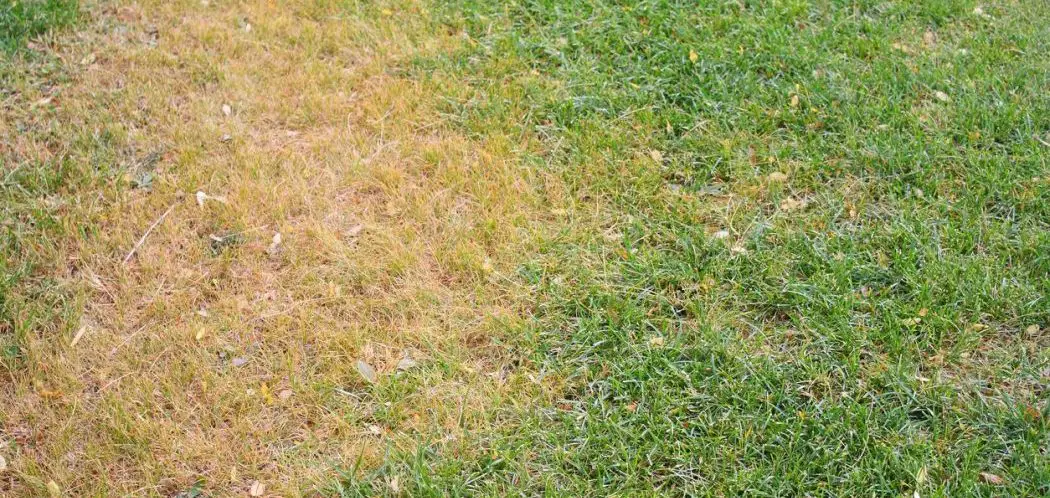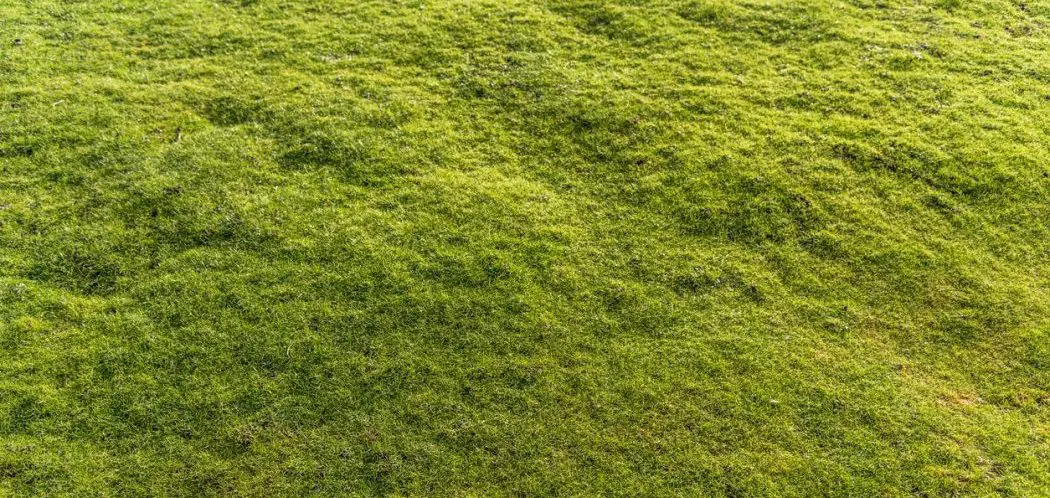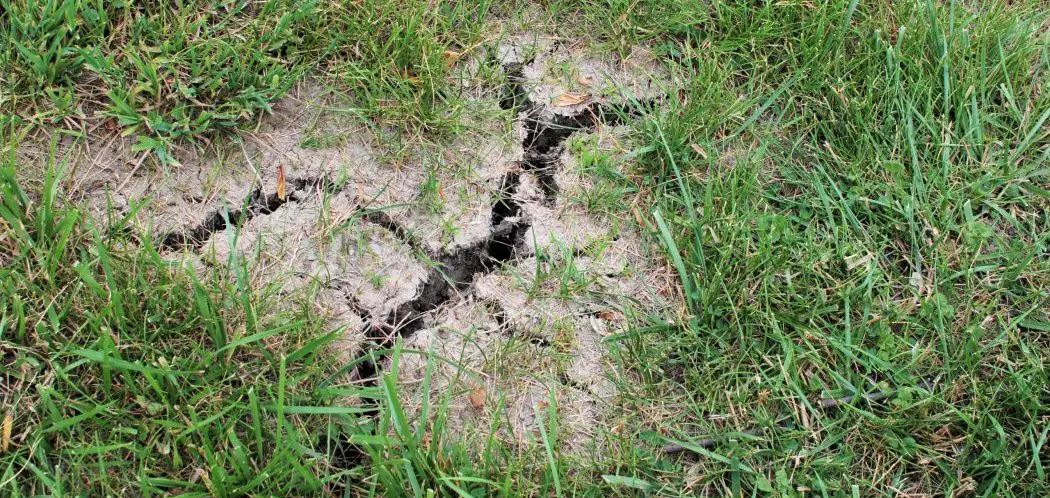A lawn’s beauty is something every lawn owner tries to cultivate. When matting gets in the way of your lawn’s journey to being picturesque, it’s important to identify the cause of the matting. Once the culprit is found, you can effectively treat and prevent matting.
Reasons Your Lawn Is Matted
Here are some of the causes of your grass being matted down.
High Foot Traffic
The most common culprit of lawn matting is high foot traffic. This can appear in walkways or areas where kids tend to play. Your lawn is composed of light layers of organic material. When you repeatedly tread on these areas, the soil beneath you gets compacted.
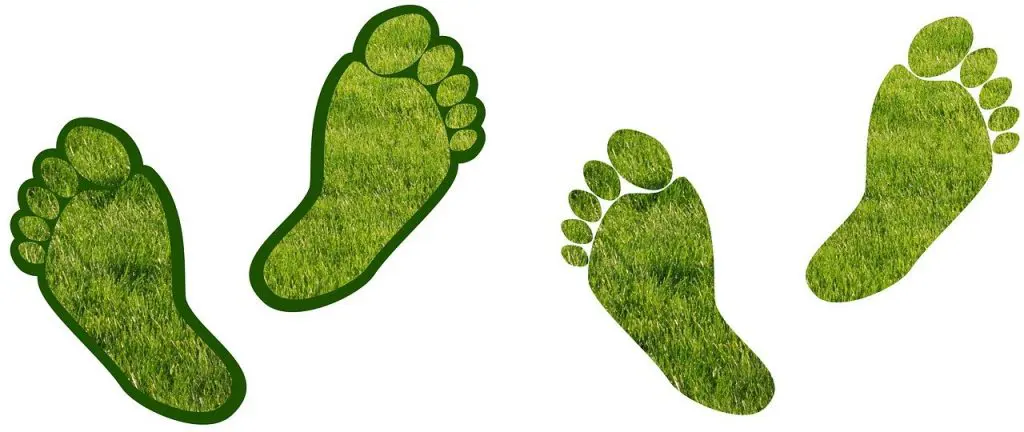
Compacted Soil
Compacted soil does not allow for the transfer of water and oxygen into the soil. This deprivation results in the grass above wilting and dying. As the plant matter dies and falls to the earth, it cannot properly decompose since microbes in the soil cannot penetrate its compacted surface. This results in layers of dead material forming together to create widespread mats.
You can check to see if your soil is compacted by using a penetrometer (I like this one).
Thatch
Thatch can cause a lawn to appear matted when it is overgrown. Thatch is the natural accumulation of decaying plant matter and debris on a lawn. It piles up beneath the grass’s blades but above the soil. A fine layer of thatch not exceeding a quarter of an inch is beneficial to your lawn. It provides cover for any shallow plant roots and helps the soil attract moisture from the atmosphere.
When thatch exceeds a quarter of an inch, it entangles itself with the healthy plant matter and forms a carpet-like lawn. If you find your lawn to have a spongy texture, you may have an overgrowth of thatch.
Excessive Watering
Excessive watering of a lawn can cause it to mat. As grass gets bogged down, it will wilt and die. The fallen plant matter will combine with the water and form a soggy layer on top of the soil. This can happen by irregular watering or gross rainfall.
When too much moisture is present in the lawn, fungi can invade and populate. These fungi can quickly decimate your lawn. To identify a fungal overgrowth in your lawn, you may notice streaks or discoloration in the lawn. Brown patches, powdery blotches, and slimy spots are indicators that your lawn is suffering from a fungi invasion. These unnatural patches may appear matted down as well.
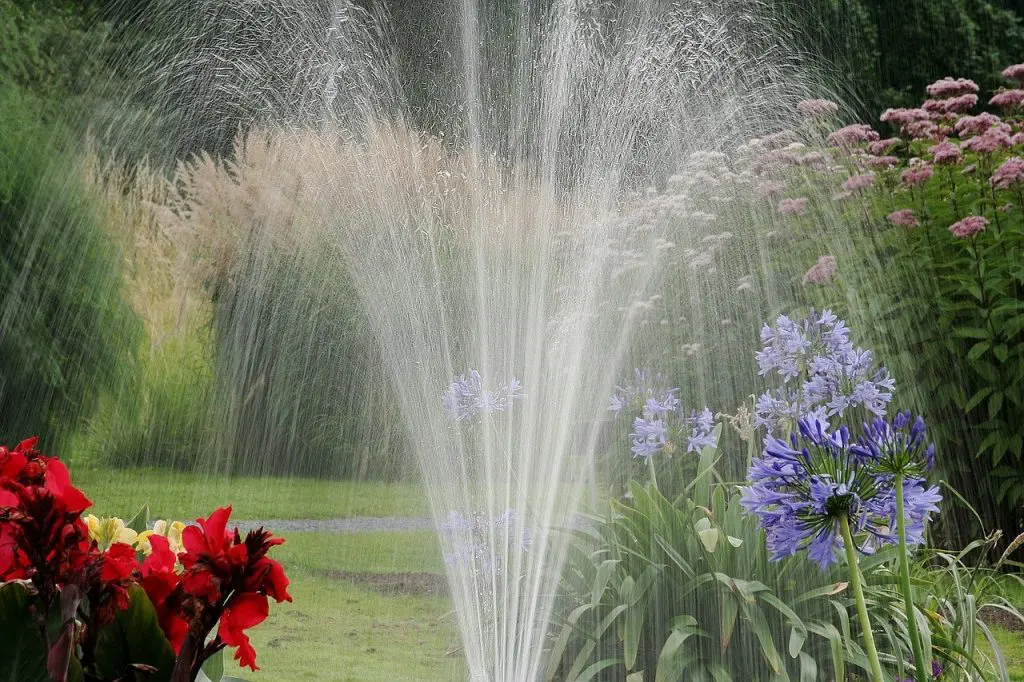
Improper Installation
Matting down of newly planted areas could be caused by improper installation. When seeding or overseeding, it is common to go overboard and place too many seeds too close together. This causes competition between the seeds. As they germinate and grow, some seeds will die and form a mat above the soil. If you elected to use sod to cover your lawn instead of seed, improper installation of it can also cause matting of the grass.
Type of Grass
The type of grass your lawn is made up of can also be a factor in your matting problem. Picking a grass that is suitable for your home’s climate is crucial. If you live in a cool season region with mild summers and frigid winters, your lawn should not be composed of warm season grasses. These warm season grasses will quickly wilt and matt down before they ever get a chance to flourish.
Warm season grasses that grow by stolons are prone to matting. These plants grow and spread from their runners branching out and rooting in the soil as they creep along horizontally.
What Can You Do About Matting?
To remedy matted grass, the first step is to agitate the lawn. You can accomplish this with a simple leaf rake.
Working in sections, lightly rake the area several times. As you pull up the dead grass from the mat, remove it. If the cause of the matting was not fungi based, you can compost the grass. If it was fungi based, dispose of the dead material to prevent the fungus from spreading.
Continue this methodical process until you have raked the entire affected area. If your entire lawn is matted, you may look into renting or purchasing a raking attachment to pull behind your lawn mower. This will enable you to cover more surface area in a timely manner.
After all of the matted material has been broken up and dead remnants are removed, it is a great time to aerate the soil.
Aeration
Aeration can be accomplished physically or chemically. Since chemical aeration involves spreading fortified liquid over the lawn, you should avoid this method. Excess moisture is the most common cause of matting, and you do not want to contribute to the drowning of your lawn.
Physical aeration is accomplished by using spiked or coring instruments to create holes in the soil. These holes allow more exchange of oxygen between the atmosphere and the earth. This will help to dry out your lawn’s saturated patches as well.
It’s probably always worth having a hand aerator (I like this one). These work well for areas that are hard to reach. This one also works great if you want take a soil sample.
If the cause of your lawn’s matting is fungal and drying out the area does not repair it, it’s time to use a fungicide.
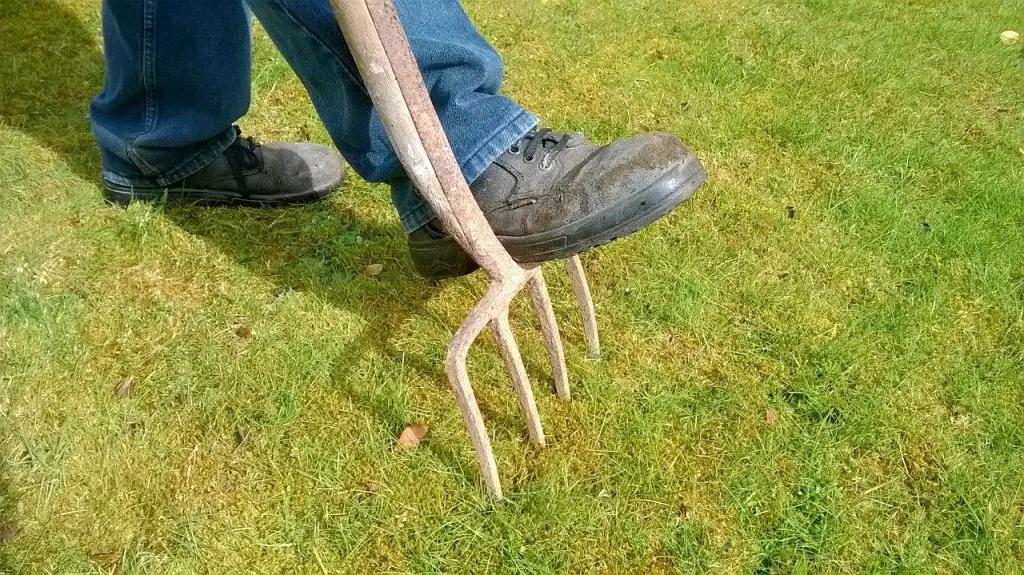
Fungicides
Fungicides work by killing fungi and preventing further growth of the fungus. Most fungicides at home improvement stores are broad spectrum. You can compare your lawn’s symptoms to the many potential fungal diseases that occur in lawns or turfs, and check the label of the fungicide to ensure it will kill the exact pathogen plaguing your lawn.
If you’re not comfortable using chemicals yourself, you can hire a landscaper or gardener. They can thoroughly inspect your lawn, identify the disease, and apply the exact fungicide required to bring your lawn back to health.
After drying out the area and getting rid of any fungal overgrowth, you’ll want to fertilize your lawn. This will give vital nutrients to your wilting lawn. Micronutrients will feed your lawn and help it regain its strength.
Overseed
If the matting caused plant death, you may need to overseed or sod the areas that are now barren. Sod provides a quick and attractive solution to bald patches in your lawn. When your entire lawn is suffering from grass thinning, you can overseed instead.
Hiring a Professional
This is another point where you may consider hiring a professional landscaper. When improper overseeding or installation of turf are the cause of your lawn’s matting, it may be time to hand the job over to a professional. Landscapers are equipped with the knowledge of proper techniques and know what preventive measures they can take to keep matting at bay.
Ways to Prevent Matting in Your Lawn
Here are the best ways to prevent grass from being matted down
Foot Traffic
Foot traffic is one of the most common causes of matting in a lawn. To prevent your soil from being trampled, you can define walkways with other materials. Pavers can be found in three choices of material: concrete, brick, and stone. Natural pebbles can be spread down a walkway to provide an attractive path. Less available turf to trample on means less visible matting.
You can also rotate the areas that are commonly used by your family. Eliminating hills and low lying spots creates more even turf for everyone to enjoy. Define your children’s play areas. If they enjoy soccer, you can set up their goal posts in various locations. Instead of always being in the middle of the lawn, you can move their goal to the South East corner of your lawn for a few weeks. Then, you could move it to the North West section of your lawn.
Outdoor dining areas located on your grass can also be reconfigured. Everyone loves to sit at a picnic table with their toes in the grass. The weight of the picnic table and the foot traffic around it can contribute to matting of the grass. Seasonally, move your outdoor furniture that rests on your lawn. This will give grass that has previously been trampled a rest and allow it time to flourish again.
Appropriate Watering
Excessive water in the lawn can contribute to matting by itself, and it’s also a contributing factor for mold and fungus growth.
Adhere to proper watering techniques. Most lawns require one inch of water per week. If your grass is drought tolerant or xeriscape friendly, it does not need as much water.
You should always water your lawn early in the morning. This ensures your grass has plenty of time to soak up the moisture before the hottest period of the day evaporates it all. Watering late in the evening can cause the water to combine with nighttime condensation. This creates an excess of water in the lawn, and when combined with the darkness of the evening, fungi can flourish.
Grading
Ensuring proper grading of your lawn can also prevent excess moisture from accumulating in low lying areas. Small deviations in a lawn’s topography can be remedied by filling in holes or topdressing. However, large inconsistencies should be handled by a professional. They can calculate what the grade of your lawn should be and ensure water does not flow toward your home as it drains off the lawn.
In Summary
A lawn’s tendency to mat can be attributed to many factors. Thankfully, most of these factors are in your control. Once you have identified the cause of your lawn’s matting, you can remedy it. Proper lawn care can prevent future matting.
Here are some of my favorite lawn care products
Thanks a lot for making it to the end of this post! I hope you found it useful. Here are some lawn care products that I use and that I think you’ll also find helpful. These are affiliate links, so if you do decide to use any of them, I’ll earn a commission.
In all honesty, these are some of the basic products that I use and recommend to everyone.
Broadcast Spreader
This Scotts Elite dual rotary spreader is not a professional grade model but it’s excellent for homeowners.
I really like the edge guard on it. It’s really easy to switch on and off so it’s great for going around my driveway and flower beds.
If you’re not looking to spend hundreds of dollars, I’d definitely recommend this model. It spreads out a wide path and is great quality for the cost.
Backpack Sprayer
This 4-Gallon sprayer is my absolute favorite. It sprays for a really long time. I’ve had this sprayer for quite a while and I’ve never had the battery run out.
The adjustable pressure switch is a really import feature to me.
You can order a lot of accessories for this model but I’ve never really found much of a need for it.
Head Aerator
Hand aerators are great for small spots if you’ve got construction debris or a spot that constantly dries out.
You can also fill these holes with organic matter that will hold a bit more moisture.
This one by Yard Butler is an absolute bargain. It pulls nice long cores. I also use it for taking soil samples around the yard!


